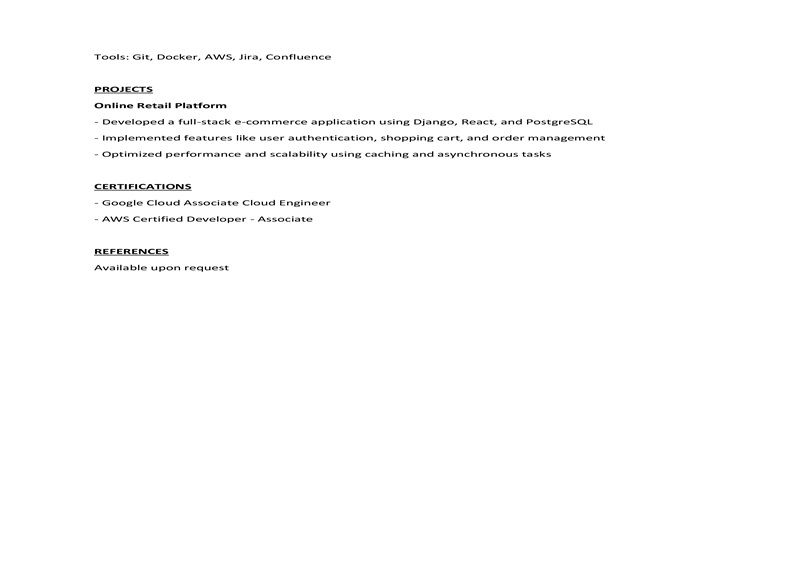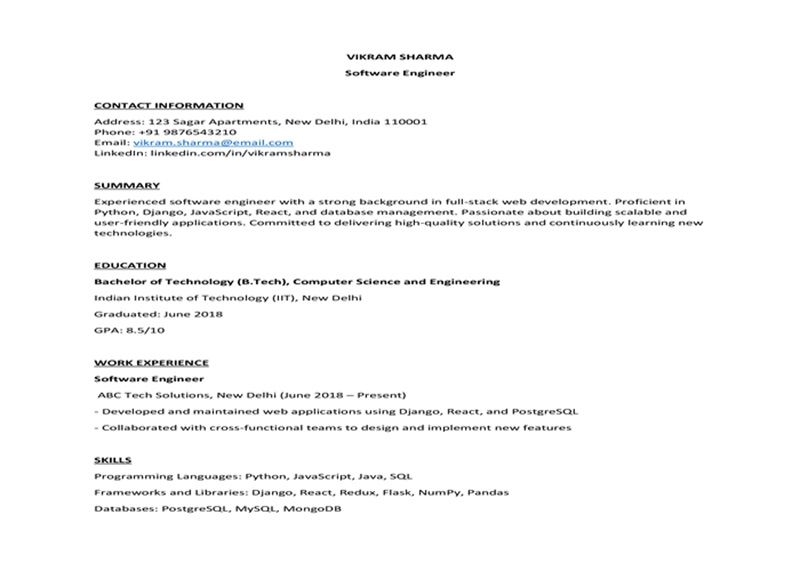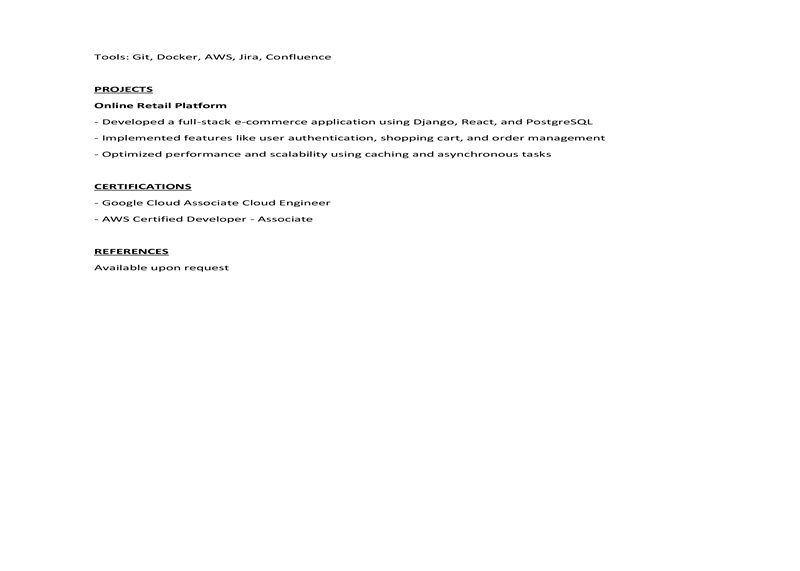- What is a CV?
- What is a Resume?
- Differences between CV and resume at a glance
- Difference in format
- Difference in content
- Difference in the order of events
- Tips to Write a CV
- Tips to Write a Resume
- Resume vs Curriculum vitae: Whis one should you use?
- Still not sure which one to go with?
- Resume is a safer bet!
Applying for that first job might be intimidating for people entering the world of professionals. A question that often pops up in the minds of job seekers is whether to go with a CV or a Resume.
Today, we will take a look at the differences between CV and Resume and help you decide which one to use in which situation. Although both the documents play different roles in different industries, it is very important to understand the nuances between the two.
What is a CV?
A Curriculum Vitae (CV) is a comprehensive document that provides a detailed overview of an individual's academic and professional background.
Unlike a resume, which is typically a one-page summary of key qualifications, a CV is typically longer and more extensive, covering educational achievements, research experience, publications, awards, and other relevant information.
CVs are primarily used in academic and research-oriented fields, where a comprehensive record of one's accomplishments is essential for consideration in positions such as professorship, research fellowships, or highly specialized roles.
The level of detail in a CV allows for a thorough evaluation of a candidate's suitability for the specific role or academic pursuit.
What is a Resume?
A resume is a concise, one- to two-page document that highlights an individual's key qualifications, skills, and professional experiences.
Unlike a comprehensive CV, a resume is tailored to a specific job or industry, focusing on the most relevant information that demonstrates the applicant's suitability for the role.
The resume format typically includes sections such as contact information, professional summary, work history, education, and relevant skills or achievements.
The goal of a resume is to provide a clear and compelling snapshot of an applicant's background, making it easier for potential employers to quickly assess their fit for the position.
A well-crafted resume can be the crucial first step in securing an interview.
Differences between CV and resume at a glance
At first glance, it might appear that CV and resume are almost the same but the devil is in the details.
| Factors | CV | Resume |
|---|---|---|
| Length | Much longer in length | Maximum up to 2 pages |
| Focus | Focus is on career | Focus is on professional skills |
| Contact details | Multiple ways to contact you can be mentioned | Mainly phone number & email is sufficient |
| Work details | Mentions detailed work experience | Mentions designation, duration, & firm mainly |
| Cover letter | Multiple ways to contact you can be mentioned | Mainly phone number & email is sufficient |
| Skills | Certifications in chronological order | Skills with highest proficiency are prioritised |
Difference in format
Resumes are short & crisp
- A resume is a precise description of your career that can be covered in under 2 pages.
- It is always concise and talks only the specifics as necessary. It is about your work experience and showcases your proficiency.
- Once the recruiter goes through it, the recruiter knows what you bring to the table in terms of employable skills.
CV’s are much longer
- A CV is prepared with details that can go beyond 2-3 pages.
Difference in content
A Resume talks about skills
- Resume provides you the flexibility to present only the most important skills, in the best light.
- Resume allows you to show the skills a recruiter is looking for and not bog them down with unnecessary chitter chatter.
Related: 21 powerful resume keywords to use in your resume.
CV talks about entire educational and professional career
- CV consists information about your educational background including achievements, projects, research papers and publications.
- CV also covers any recognition & awards you received throughout your career.
Difference in the order of events
A CV follows chronological order
- When designing a CV, you list out all your achievements, in chronological order, i.e. stating them in the order they happened.
- This helps the recruiter understand your growth as a professional. They can easily understand who you are as a person and if you would be a good fit for the role.
A Resume can follow any of these three formats
- Chronological: The details are listed out in sequence as they happened.
- Functional: The skills required for the job specification are highlighted at the top.
- Combinational: Skills with highest proficiency are followed by a combination of the above two formats.
Now that the basic differences are clear, let us look at what data to put in both of them. The differences can be tricky to understand, after all, they share a lot of similarities at their core.
| Contents of a CV | Contents of a Resume |
|---|---|
| Cover letter | Summary Statement |
| Contact Information | Contact Information |
| Educational Background | Education & Certifications |
| Work Experience | Work Experience |
| Projects Undertaken | Key Skills & Technologies |
| Honors, Awards, Fellowships, Grants | |
| Publications & Presentations | |
| Professional Memberships | |
| References |
Since organisations can ask for any of these documents depending on the position/job role they have the opening for, let’s take a couple of examples to understand more.
Tips to Write a CV
Next, let’s go through the tips to writing a perfect CV.
-
Tailor Your CV: Customize your CV for each job application, highlighting the specific skills and experiences that align with the role's requirements.
-
Optimize for Readability: Use clear, concise language, well-structured sections, and strategic formatting to ensure your CV is easy to scan and digest.
-
Quantify Your Achievements: Incorporate measurable results and data-driven accomplishments to demonstrate the impact of your work.
-
Showcase Relevant Skills: Prioritize the skills and competencies that are most relevant to the position and provide concrete examples of how you have applied them.
-
Proofread Thoroughly: Carefully review your CV for any errors or inconsistencies, as attention to detail reflects professionalism and attention to detail.
Here’s a CV sample to help you feel inspired;


Tips to Write a Resume
In this section, let’s find out how to write a perfect resume. Here are 5 unique and effective tips to write a compelling resume:
-
Prioritize Relevant Information: Include only the most relevant work experience, skills, and achievements that directly align with the target job. Tailor each resume to the specific role.
-
Use Concise, Impactful Language: Craft clear, concise bullet points that showcase your contributions and accomplishments using action-oriented verbs. Avoid lengthy paragraphs.
-
Optimize for Applicant Tracking Systems: Incorporate relevant keywords from the job description to improve your resume's chances of getting past automated screening.
-
Highlight Transferable Skills: Showcase skills that are valuable across multiple industries, such as communication, problem-solving, and adaptability, even if you're changing career paths.
-
Incorporate Visual Elements: Use strategic formatting, spacing, and design elements to enhance readability and make your resume visually appealing without distracting from the content.


Resume vs Curriculum vitae: Whis one should you use?
The choice between a CV (Curriculum Vitae) and a Resume depends on the job or application requirements and the industry and geographical location. Here's a general guideline on when to use a CV vs Resume:
When to use a CV
- When applying for academic, research, or highly specialized roles, such as professorships, research fellowships, or positions in the medical/scientific field.
- When submitting applications for opportunities in countries where a CV is the standard, such as in Europe, the Middle East, or India.
- When the job posting or application guidelines specifically request a CV.
- When you have an extensive academic or research background that you want to showcase in detail.
Related: 10 things recruiters look for in your CV
When to use a Resume
- When applying for most private-sector jobs, particularly in industries like business, technology, marketing, or finance.
- When applying for positions in countries where a Resume is the more common document, such as the United States or Canada.
- When the job posting or application guidelines specifically request a Resume.
- When you want to highlight your most relevant skills, experiences, and accomplishments for a specific job opportunity.
In general, a CV is best suited for academic, research, or highly specialized roles, while a Resume is better suited for most private-sector job applications. However, it's essential to carefully review the job requirements and application guidelines to ensure you submit the appropriate document.
The key is to tailor your document, whether a CV or a Resume, to showcase your qualifications and experiences in the best way possible for the specific role you are applying for.
Still not sure which one to go with?
If you are still not sure which one to go with, have a look at the job profile & answer these questions.
-
Does the job ask for a specialised skill?
-
Does the job require multiple skills? Or is it focused on a few special skills?
-
Is the job role in a management position? Most management positions require a CV.
If the document is not mentioned in the job description, one solution is to contact the recruiter for more information on the required document. If that is not possible, go with the resume
Resume is a safer bet!
If you are still not sure which one to go with, resume is a better bet as it showcases your skills in the best light. Also, because of its crisp nature, it is easier for the recruiter to go through it. A CV makes for a much longer document, which can put off some recruiters. So better to err on the side of caution and go with a resume just to be safe.
